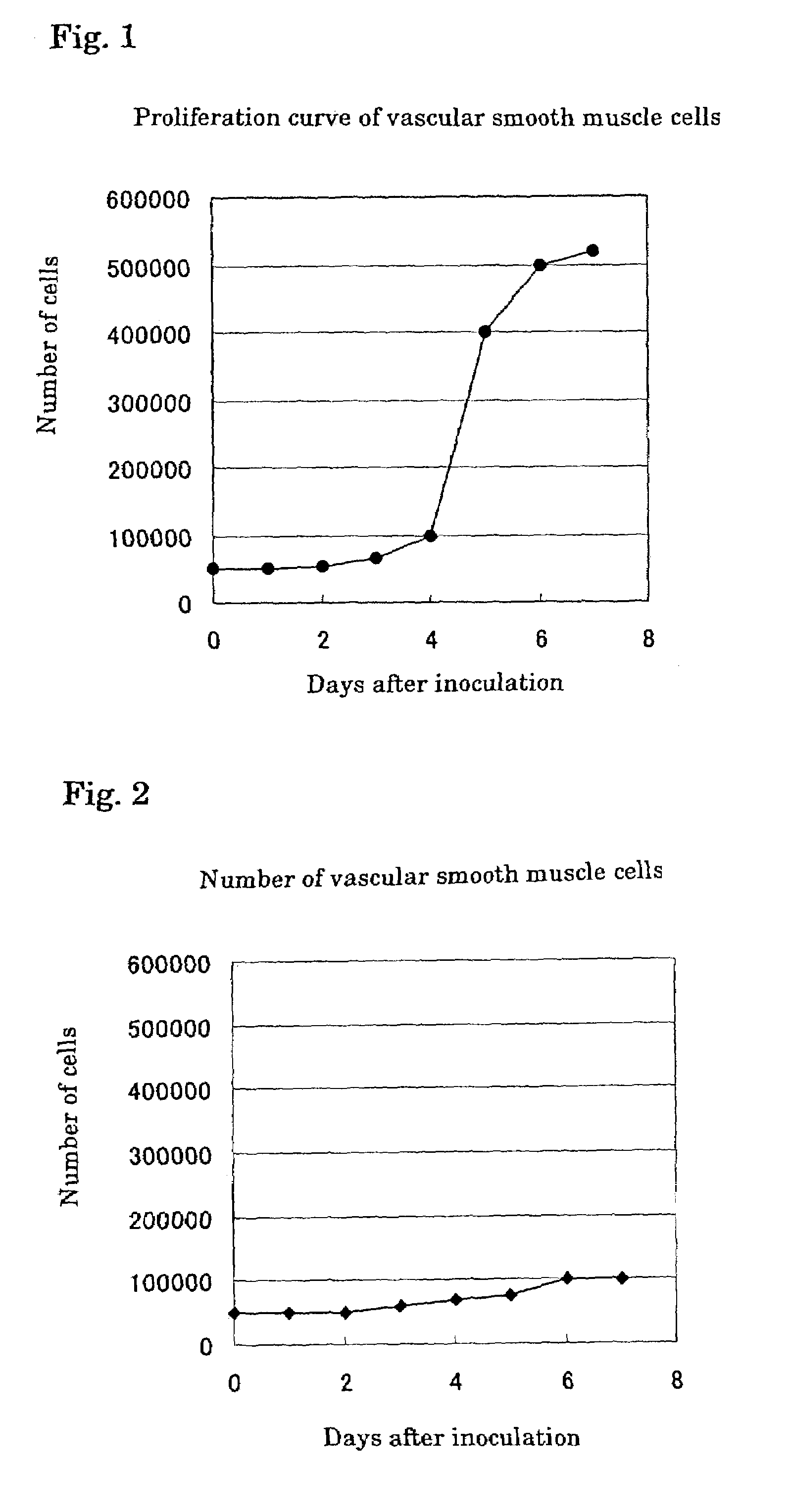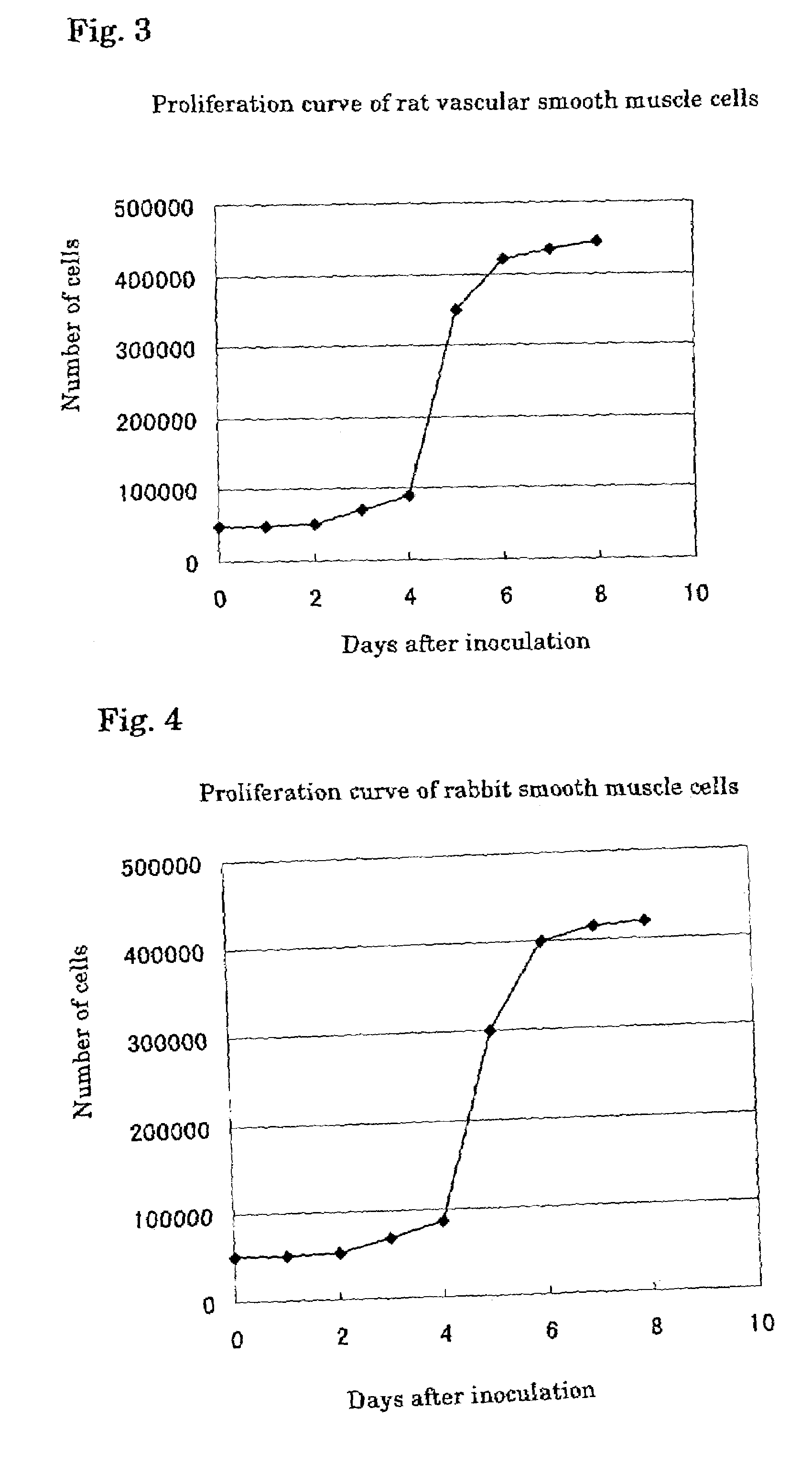Liposome containing hydrophobic iodine compound
a technology of hydrophobic iodine and liposome, which is applied in the field of liposome, can solve the problems of low resolution of arteriosclerosis, inability to detect arteriosclerosis, and inability to meet the requirements of treatment and treatmen
- Summary
- Abstract
- Description
- Claims
- Application Information
AI Technical Summary
Problems solved by technology
Method used
Image
Examples
example 1
Preparation of Culture System of Vascular Smooth Muscle Cells of which Proliferation is Activated by Foam Macrophages (1)
[0049]Vascular smooth muscle cells were isolated from mouse aorta endothelium (“Tissue Culture Method”, 10th Edition, ed. by the Japanese Tissue Culture Association, published by Kodansha, 1998). The isolated vascular smooth muscle cells were suspended in 10% FBS Eagle's MEM (GIBCO, No. 11095-080) and inoculated in wells of a 12-well microplate (FALCON, No. 3503). The number of the cells in each well was adjusted to 10,000 cells. The cells were cultured for 3 days under conditions of 37° C. and 5% CO2.
[0050]Then, foam mouse peritoneal macrophages were prepared according to the method described in Biochimica Biophysica Acta, 1213, 127 (1994). 200,000 cells of the foam macrophages were separated and inoculated on an insert cell (FALCON, No. 3180) placed on each well of the microplate where the vascular smooth muscle cells were cultured on the bottom surface. The cel...
example 2
Verification of Expression of Scavenger Receptors on Vascular Smooth Muscle Cells
[0051]It is known that vascular smooth muscle cells in an arteriosclerotic lesion express scavenger receptors on their surfaces to take up oxidized LDL (Biochem. Phamacol., 15:57 (4), 383–6 (1999); Exp. Mol. Pathol., 64 (3), 127–45, 1997). The vascular smooth muscle cells of the culture system of FIG. 1 were immunostained by using mouse scavenger receptor antibodies. As a result, although the expression was not observed on the vascular smooth muscle cells on the 3rd day from the inoculation, clear staining was observed on the 6th day from the inoculation. When the foam macrophages on the cell filter were also similarly immunostained, clear staining was also observed.
example 3
Uptake of Oxidized LDL by Vascular Smooth Muscle Cells
[0052]In the culture system of FIG. 1, 125I-labeled oxidized LDL was added to the medium for the vascular smooth muscle cells on the 3rd day and 6th day from the inoculation. 125I taken up into the cells was counted 24 hours after each addition. The results are shown in Table 1. Clear difference in uptake amount was observed between the results on the 3rd day and 6th day. The above results indicate that the vascular smooth muscle cells cultured in the cell culture system of the present invention had properties similar to those of smooth muscle cells in a lesion of arteriosclerosis, restenosis or the like.
[0053]
TABLE 1DayUptake of 125I-oxLDL3rd Day from inoculation0.52 ± 0.116th Day from inoculation2.2 ± 0.4×10,000 cpm
PUM
 Login to View More
Login to View More Abstract
Description
Claims
Application Information
 Login to View More
Login to View More - R&D
- Intellectual Property
- Life Sciences
- Materials
- Tech Scout
- Unparalleled Data Quality
- Higher Quality Content
- 60% Fewer Hallucinations
Browse by: Latest US Patents, China's latest patents, Technical Efficacy Thesaurus, Application Domain, Technology Topic, Popular Technical Reports.
© 2025 PatSnap. All rights reserved.Legal|Privacy policy|Modern Slavery Act Transparency Statement|Sitemap|About US| Contact US: help@patsnap.com



